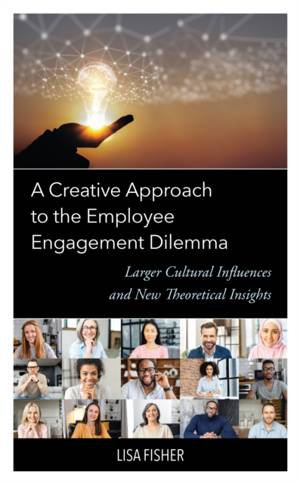
- Afhalen na 1 uur in een winkel met voorraad
- Gratis thuislevering in België vanaf € 30
- Ruim aanbod met 7 miljoen producten
- Afhalen na 1 uur in een winkel met voorraad
- Gratis thuislevering in België vanaf € 30
- Ruim aanbod met 7 miljoen producten
Zoeken
A Creative Approach to the Employee Engagement Dilemma
Larger Cultural Influences and New Theoretical Insights
Lisa Fisher
Hardcover | Engels
€ 137,45
+ 274 punten
Omschrijving
Despite employee engagement literature spanning more than three decades, persistent challenges remain, and many seem to be permeating organizations from the outside in. Organizations invested in current structures, adhering to larger cultural ideas and taking cues from other organizations compartmentalize engagement as a people problem and relegate it to a space outside of normal operations. This is the employee engagement dilemma. The US macro-cultural lens focusing on individualism and meritocracy reinforces and confirms this approach and the logic underlying it. These cultural ideas drive scholars and practitioners toward ever closer examination of circumstances within organizational settings, and so the dilemma remains. In the context of the Fourth Industrial Revolution and the Great Resignation, the employee engagement stakes have never been higher, especially for organizations with remote workforces. In A Creative Approach to the Employee Engagement Dilemma: Larger Cultural Influences and New Theoretical Insights, Fisher employs a symbolic interactionist lens and other theoretical tools to interrogate the current trajectory and make visible foundational cultural assumptions operating in and influencing organizations from the outside that delimit our thinking about and undermine engagement before it even begins. Equipped with these larger cultural insights, Fisher then revisits the engagement literature and broader scholarly offerings to pull in novel insights, applied research solutions, and new directions for future studies.
Specificaties
Betrokkenen
- Auteur(s):
- Uitgeverij:
Inhoud
- Aantal bladzijden:
- 146
- Taal:
- Engels
Eigenschappen
- Productcode (EAN):
- 9781666926392
- Verschijningsdatum:
- 17/11/2023
- Uitvoering:
- Hardcover
- Formaat:
- Genaaid
- Afmetingen:
- 152 mm x 229 mm
- Gewicht:
- 385 g

Alleen bij Standaard Boekhandel
+ 274 punten op je klantenkaart van Standaard Boekhandel
Beoordelingen
We publiceren alleen reviews die voldoen aan de voorwaarden voor reviews. Bekijk onze voorwaarden voor reviews.











